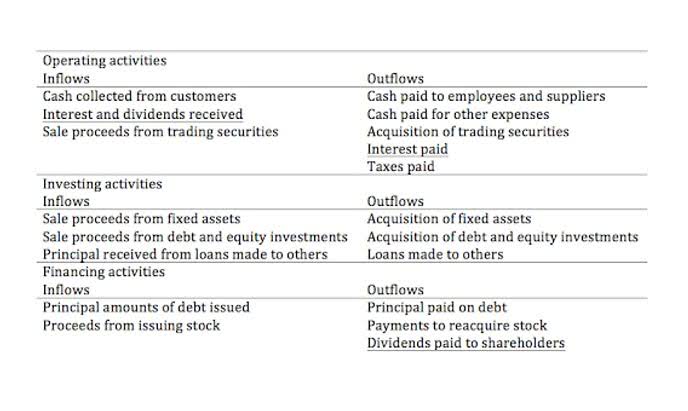
The advances made over these first 40 years have enriched understanding of alcoholism from a neuroscience perspective and have expanded concepts of neuroplasticity in the human brain. The innovations enabling discoveries also have generalized to other areas of neuroscience, exemplified by our understanding of neural degradation with chronic alcoholism and repair with sobriety. Original concepts of brain structure modification were unidirectional—that is, degradation occurred with age or disease without the chance of neuronal regeneration.
What Is Psychological Addiction?
But if it rises too steeply, the resulting overproduction of insulin can actually lead to low blood sugar, a condition called hypoglycaemia. This is especially dangerous for diabetics, especially those taking certain drugs to lower their blood sugar. Some liver damage comes from free radicals, a group of molecules that are highly reactive. These molecules can attack the nearest stable molecule, leading to a dangerous chain reaction that can result in a disease called cirrhosis of the liver. Cirrhosis occurs when scar tissue replaces normal, healthy tissue and the liver, which needs unrestricted blood flow, doesn’t work as it should [12]. It’s important to note that physical dependence alone does not necessarily indicate addiction.
- This is of such concern that people who are trying to overcome addiction to these substances should only do so under medical supervision.
- Physical dependence on alcohol is a serious condition that can contribute to the development of alcohol addiction and other medical issues, but help is available.
- Dependence can occur with various substances, including drugs, alcohol, and even certain medications.
- So, medication prescribed by a doctor can still result in a physical dependence.
- Brain regions commonly invoked in rewarding conditions are the nucleus accumbens and ventral tegmental area.
- Following years of dispute, the Diagnostic and Statistical Manual of Mental Disorders (DSM), recatagorised drug and alcohol addiction, dependence and abuse under the same umbrella.
5 Substance Use and Abuse
- Overall, alcohol is the only substance with a substantial amount of data on criterion level DIF.
- The guidance and understanding of others who have gone through similar experiences can be invaluable in the journey towards recovery.
- Thus, opioid drugs, which mimic this endogenous painkilling mechanism, have an extremely high potential for abuse.
- If you’re psychologically addicted to alcohol you might start to feel anxious and fearful that alcohol is not available.
These theorists found that memory comprises multiple, dissociable functions supported by different brain regions and systems (Squire and Butters 1992). KS amnesia is characterized by severe and relatively circumscribed deficits in remembering new information (i.e., forming new memories), regardless of type of memoranda material (e.g., words, pictures, odors, touches). The capacity for “remembering” can be tested with paradigms for explicit memory and implicit memory. Paradigms for explicit memory include approaches such as free or cued recall tests (e.g., asking people to repeat elements of a story they heard an hour ago) or recognition tests (e.g., asking people to select from a series of items the ones that were presented on a test). Implicit memory tests assess, for example, improved performance on a motor skill or ability to select a word infrequently used to complete a word stem (e.g., when asked to complete “STR _ _ _,” answer “STRAIT” instead of the more commonly used “STREET”). That cueing can enhance remembering of new explicitly learned information by KS patients suggested that retrieval processes are more affected than encoding or consolidation processes.
Physical vs Psychological Alcohol Addiction
According to the classical double dissociation model, to be able to draw the conclusion that a certain brain structure or network is the neural source of a particular cognitive or motor function, it is essential to demonstrate first an association between the two. This can be done by demonstrating that compromised performance on a test assessing the function (e.g., on the matrix reasoning test, which assesses nonverbal intelligence) occurs with a brain lesion in the hypothesized neural source (e.g., the parietal cortex). Then, the next crucial step is to demonstrate a double dissociation using tests for two different functions (e.g., the matrix reasoning test and a test of spatial working memory) and assessing lesions in two different brain regions (e.g., the parietal cortex and the prefrontal cortex). However, uncomplicated alcoholics normally do not endure discrete and complete structural brain lesions, per se. The detox phase of rehabilitation to address physical dependence usually takes one to two weeks. Your withdrawal symptoms will vary in intensity depending on the type and quantity of substances taken.
Heavy consumption either during a single occasion or over a long period can cause and aggravate heart conditions such as cardiomyopathy (stretching and drooping of heart muscle) and arrhythmias (irregular heart beat), and may also lead to strokes and high blood pressure. Discover the key characteristics of alcohol treatment centers and how they can support your journey to recovery. Find natural support to alleviate symptoms and enhance your journey to recovery. The mind craves these chemicals and reacts negatively when they’re suddenly gone. Finally, there’s the myth that if you relapse after beating your addiction, you have failed. Just like with other diseases, sometimes you need multiple treatments or repeat treatments.
- Recognizing the signs of both physical and psychological dependence is an important step towards understanding the complexities of addiction.
- So unless it is urgent, gradually cutting down on the amount and how often you use it should make it easier.
- However, generally, this is based on behaviour during the previous 12 months or more.
- It is not advised to go “cold turkey” or suddenly stop consuming alcohol on your own to treat your physical dependency, as it can lead to dangerous withdrawal symptoms.
- Addictions are more likely to result in serious harm, including suicide, unlike tolerance and physical dependence.
- That’s why your doctor will often recommend you taper the dose when you decide to come off them.
- Substances interact with our pleasure and reward response which causes the brain to want to repeat the same behaviour and fuels the cycle of addiction.
- Finally, there’s the myth that if you relapse after beating your addiction, you have failed.
- Alcoholism can be both a chemical (physical) and a habitual (psychological) addiction.
If you’re seeking guidance on alcohol addiction, look no further than AlcoholAwareness.org. This comprehensive platform offers a wealth of information on understanding alcoholism’s nuances, the effects it has on the body and mind, and the steps to take for recovery. Foetal Alcohol Syndrome is the most involved end of the Foetal Alcohol Syndrome Disorder spectrum, a neurodevelopmental condition with lifelong cognitive, emotional and behavioural challenges.

In fact, evidence continues to accumulate that alcohol consumption can result in brain acetaldehyde levels that may be pharmacologically important (Deng and Deitrich 2008). However, the role of acetaldehyde as a precursor of alkaloid condensation products is less compelling. The patient physiological dependence on alcohol who is dependent on alcohol or other substances of abuse has a very serious problem. Substance abuse may lie at the root of many presenting illnesses, including serious conditions such as endocarditis, cirrhosis of the liver, septicemia, hepatitis, and subdural hematoma.

Am I drinking too much alcohol, Signs, Symptoms & Self Assessment










